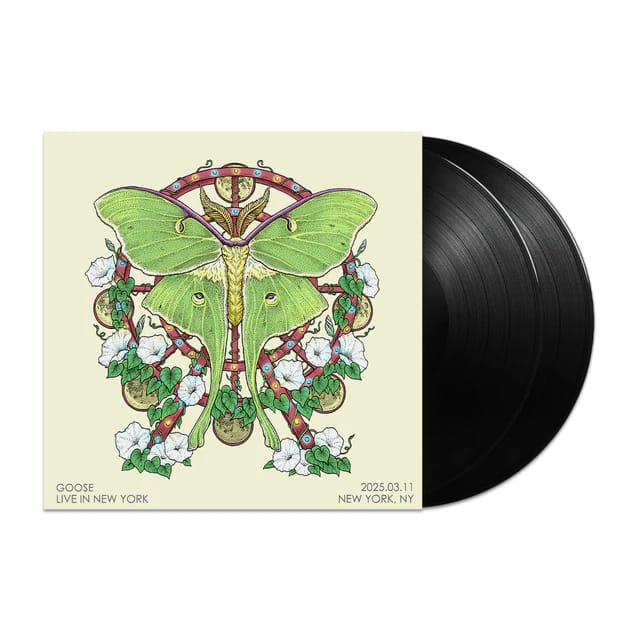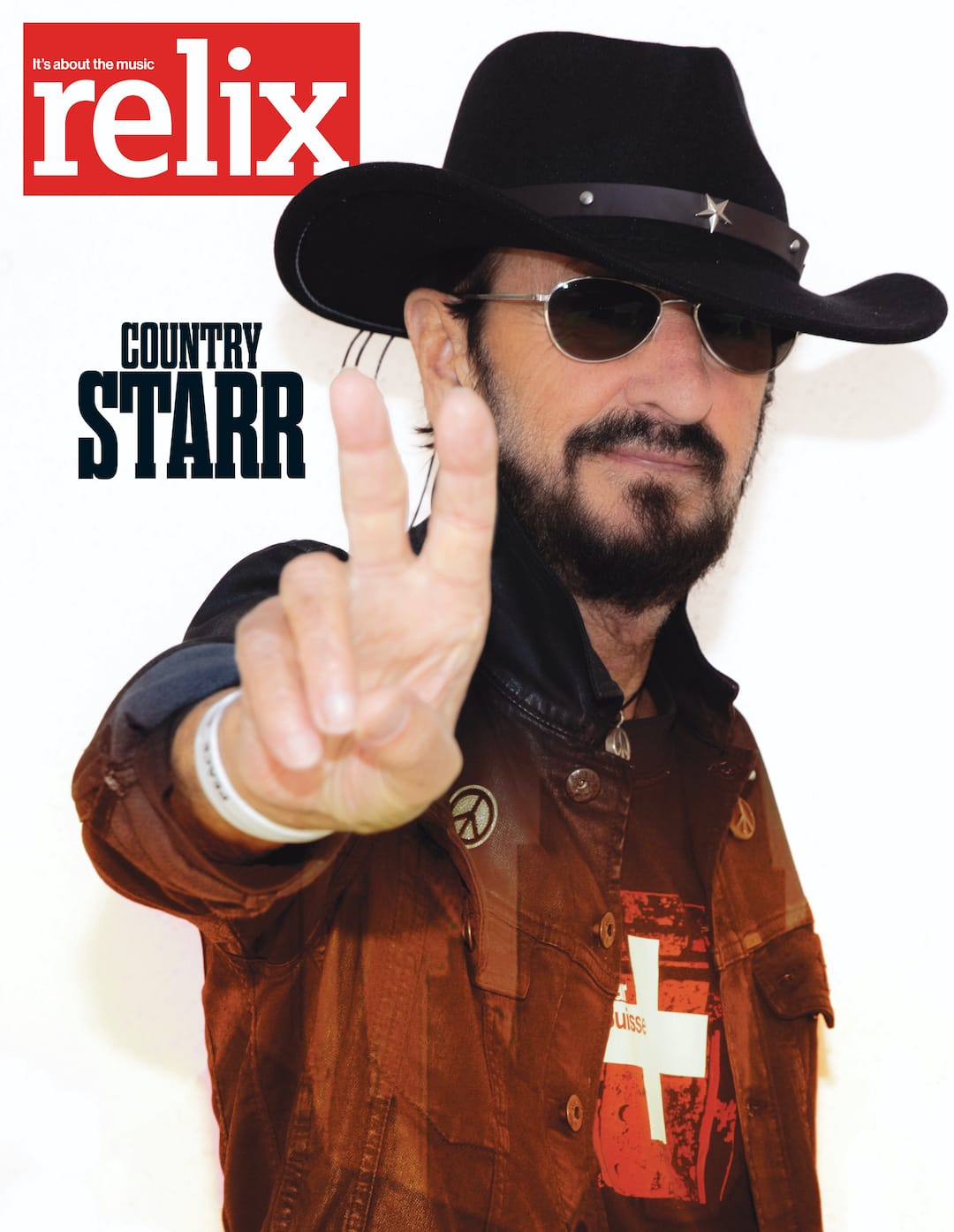Neal Casal on Playing Garcia’s Wolf

Casal with Wolf backstage at the Great American. Photo by Jay Blakesberg via Facebook
This past December, one of Jerry Garcia’s famed guitars- known by the moniker Wolf for the cartoon image of the animal at the base of the instrument- reemerged onstage in the hands of Neal Casal during a Chris Robinson Brotherhood show at San Francisco’s Great American Music Hall. Casal played it throughout the band’s two sets before giving it over to Robinson for the group’s encore. However, this isn’t the first time the guitar has come out to play- so to speak- since Garcia died in 1995. To whit, some back story.
In May 2002, nearly 200 Grateful Dead-related items went up for auction, among them Wolf and another famed Garcia guitar, Tiger. Both guitars were custom built by luthier Doug Irwin who first met Garcia in the early ’70s when he was working for the San Francisco-based guitar and bass maker Alembic.
After purchasing Irwin’s first custom made guitar for Alembic in 1972, Garcia asked him to make another one, offering a few specific requests with regard to its pickups. Wolf, for which the guitarist paid $1,500, was unveiled in October 1973. Garcia played Wolf through the first half of 1975, switched to playing Travis Bean guitars for the next two years, and then returned to Wolf full-time in the fall of 1977 through the summer of 1979 before moving onto Tiger almost exclusively for the next 11 years.
In his indispensable book Grateful Dead Gear, Blair Jackson quotes a Jon Sievert Guitar Player interview with Garcia describing Irwin’s guitars. “There’s something about the way they feel with my touch- they’re married to each other,” Garcia said. “The reason I went with his guitars in the first place was they just fell into my hand perfectly… I’m not analytical about guitars, but I know what I like. And when I picked up [his first Irwin guitar], I’d never felt anything before or since that my hand likes better.”
Wolf went for $700,000 to Hyatt-family heir and Sonia Dada band member Dan Pritzker while Tiger fetched $850,000 and went to Indianapolis Colts owner Jim Irsay. (With commission price, the price tags were $789,500 and $957,500, respectively.) Pritzker’s father Jay, and his uncle John, are both longtime Deadheads and presumably passed along their musical tastes to the youngster who also happened to attend Wavy Gravy’s Camp Winnarainbow as a child.
While never quoted publicly, it would appear that Pritzker believes in the idea that Wolf should be played- not simply stowed away and gawked at in private. To that end, he used it on the majority of the group’s 2004 release Test Pattern and, prior to lending it to the Chris Robinson Brotherhood for a night, let it be played by other musicians in public on three other occasions: Ryan Adams with Phil Lesh (7/14/05), Jimmy Herring with Phil Lesh & Friends (7/15/05; first set only) and John Kadlecik with Dark Star Orchestra (10/05/06) during which Bob Weir came out for the entirety of the band’s second set. The Brotherhood instance is the first to not have a Dead member involved in some capacity.
As has been the case with Wolf’s previous appearances, fans’ reactions online have been mixed, with some seeing it as sacrilege while others seeing it as a natural evolution in the guitar’s existence.
We spoke with Casal a short while after the Great American gig to get his reflections on playing the hallowed guitar and his reaction to the fans’ responses. What follows is an edited version of that conversation.

What was it like as a guitar player and Dead fan to suddenly strap on this piece of history? How long did it take for you to figure out your way around it and what were your impressions of it?
I wasted no time getting right into that guitar and amazingly it didn’t take me very long to figure out. There was very little adjustment period for me to understand what it does and understand what’s great about it. The thing that’s great about that guitar really is that it’s a lot simpler than it looks. All these switches, knobs and pickups, people feel like it’s this really complicated instrument. The lesson in that guitar for me- or what I learned from it- is not so much about all the switches and electronics but more about the craftsmanship, the woodworking and the solidity with which it was built.
The build of the guitar is the most impressive thing- the woods that were used. The way this guitar was put together is really what that guitar is all about. When you see all the little stuff, that’s cool but that’s not the soul of the guitar. The soul of the guitar is in the wood and in the building quality.
The guitar was obviously so carefully built, so thoughtfully built, that it’s standing the test of time incredibly. I imagine that guitar doesn’t get played all the time, probably not much at all. A lot of times when that’s the case with a guitar, they kind of go to sleep. Instruments can really go dormant and it can really take a long time to wake them up and get them feeling musical again. Wolf by no means is dormant. By no means ready to retire. There’s still a lot of music in that guitar. It was totally ready to get into our hands and onto a stage. It’s just a very lively, very active instrument. We had no problems playing it. It wasn’t the math problem that I thought it would be. It was actually very band friendly.
I played it for the entire show except for the encore when Chris took it over. It only took me about a song and a half before I was completely comfortable with it. It blew me away the entire show. The way the neck was constructed and there was accessibility up into the 24-fret zone. I could go places on the guitar that are a struggle on other guitars. It adapted to all the CRB music really well. It’s a bit heavy but not problematic at all. The body of the guitar is not that big. Despite its weight, it’s really comfortable. It hangs pretty comfortably on a strap.
The tone of the guitar is absolutely amazing. I’m not saying that because it’s Garcia’s at all. Once the novelty wears off, you see it for what it is. If it wasn’t a truly great instrument, I would have handed it back and said, “Hey, thanks for showing it to me but hang it on a wall for the rest of time.” But it’s not that kind of guitar. It really is an amazing instrument: Incredible sounding, incredible presence, incredible midrange to it with very little low end. The normal low end that appears in the guitars that I have that corrupts a mix when you’re playing with other people. None of that shows up there.
What could you tell from the construction that is different from say a Les Paul that you typically play or other guitars that people might be more familiar with?
It has all the marks of a truly custom instrument. It has the mark of an artisan- not a team of people making a guitar but an individual who poured over every single detail. I don’t know Doug Irwin and I don’t know much about him at all but it had that feeling of some kind of master- a true master- built this and spent a lot of time on it. There’s no production line feeling about this guitar at all. Every single thing- every detail, every bit of material down to the glue- was carefully thought through to make this very solid instrument. It’s not just eye candy. It matches the looks with the tone.

Were there certain moments in the show where you felt lift-off, so to speak, with it?
Absolutely! And I’m not exaggerating this shit just because it was Garcia’s guitar. I’ve played a lot of people’s guitars and again, once the novelty wears off, you take your picture with it and say thanks but this guitar really spoke to me and all of us! Everyone can hear it! [Keyboardist] Adam [Macdougall] was standing right next to me, just looking over at me like, “Jesus man! What is happening here?”
The guitar sustains really, really well. Where I struggle in some areas with other guitars that I own, this guitar was just sailing through those areas with no problem at all. One of the most surprising things about the guitar was how well it accepts slide playing. That was actually one of the strongest areas for me. “Rosalee” came so naturally and was so much easier than it normally is for me. We did our cover of “Never Been the Same.” Again, the slide playing on the guitar was surprising because of the sustain. And also the prettier melodic things we do- “100 Days of Rain,” things like that. We cruised through these normally difficult sections so joyfully.
I didn’t want to give it back because I completely bonded with that instrument. I’ll say it for the last time: it was not because it was Garcia’s. I’m not a bullshitter when it comes to instruments. I’ve played a lot of them. I know what I like and I know what I don’t. It doesn’t matter who it belonged to. If I don’t dig it, I give it back. That guitar spoke to me in a massive way.
As has been the case in the past when Wolf appeared onstage in someone’s hands besides Garcia’s, fans’ reactions have been both positive and negative. What’s your take?
I heard that under Jay Blakesberg’s photos there were some hater comments like, “Get your hands off that guitar. You don’t have a right to play this guitar.” It’s important to me to say to the haters that we didn’t ask for this guitar. It was offered to us and if any of those haters are guitar players, I would ask them: if this guitar was offered to you, what would you say? Would you say, “Oh, I’m not worthy” and not dare touch it or would your curiosity and your love for the instrument inspire you to want to pick it up?
We took the opportunity to have that guitar as a learning experience, as a opportunity for us to give a little bit back to it, and also to give it a little spin around the track and see what it’s made of and see if we could get some insight into Garcia’s genius. Into the workings of the Grateful Dead. Into the workings of the minds of the extremely intelligent people who surrounded that band and everything they were all about. We poured over that guitar, looking at it, listening to it. We had discussions about it and it was such a valuable thing for all of us because it inspired us to look a little bit further into what we’re looking for in our instruments. We learned so quickly what an uncompromising artist Garcia was and what an uncompromising band the Dead was and that they attracted people to build instruments for them that had the same really high standards.
So the haters should know that. The people who have a knee-jerk reaction to say, “Oh you don’t have the right to touch that.” You’re full of shit man! If someone offered you that guitar, you’d say yes and you’d do your best with it as well. People should be real careful before they condemn that quickly. It’s like, “Hey man! We know we’re not Garcia. We know we’re not the Dead. We’re not trying to be! We got lucky. It came into our sphere and we used it as a tremendous learning experience.”




















